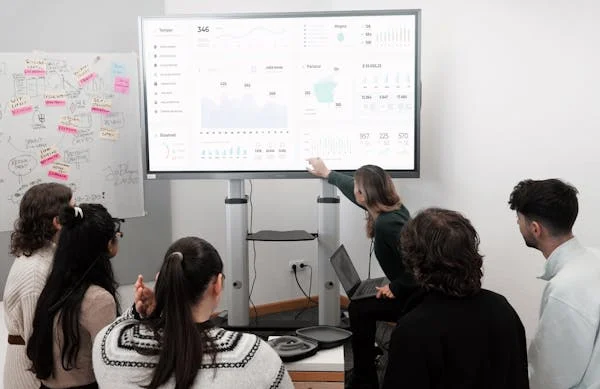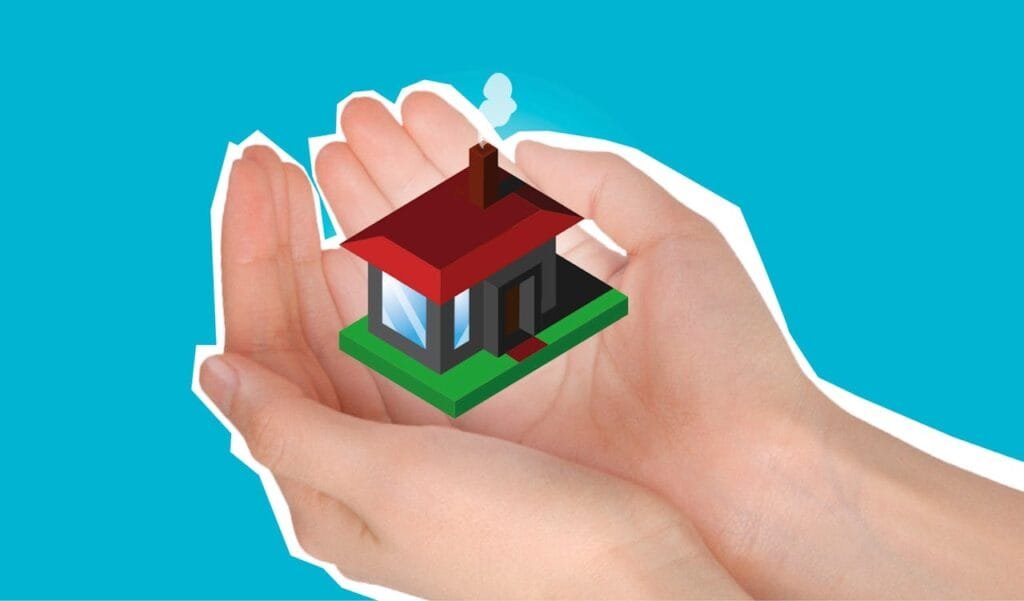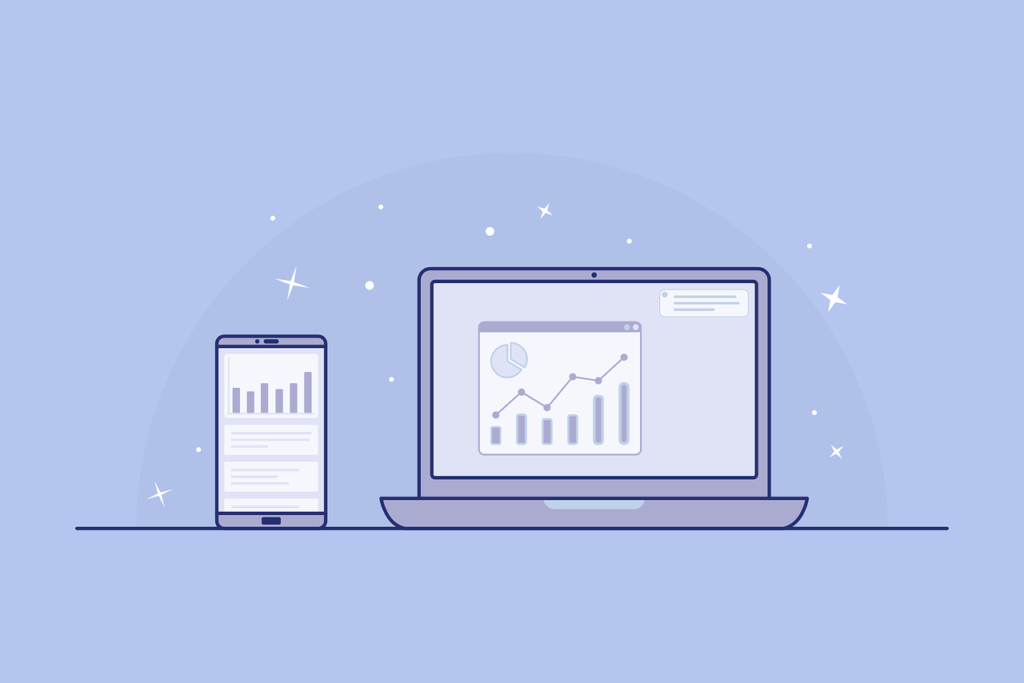Have you ever wondered why some ads feel like they were made just for you? That’s the magic of behavioral segmentation. Instead of grouping customers by broad categories like age or location, it focuses on what they do—how they interact with your brand, what they search for, and even how they shop. For B2C businesses, this strategy is a game-changer. It lets you connect with your audience on a deeper level, creating tailored experiences that convert casual visitors into loyal customers.
What Is Behavioral Segmentation?

Behavioral segmentation is one of the most precise and actionable ways to understand your audience and influence their buying decisions. For startup founders, this approach isn’t just a tool; it’s a strategy that can transform how you connect with your customers.
While traditional segmentation methods like demographics or geography provide a surface-level view, behavioral segmentation dives deep into how customers interact with your brand, revealing their intentions, motivations, and pain points.
At its core, behavioral segmentation focuses on actions. These actions might include how often someone visits your website, what products they browse, whether they open your emails, or how quickly they abandon their cart.
Each of these behaviors tells a story. For instance, a customer who repeatedly visits your product page but never buys might be intrigued but hesitant, likely needing a nudge in the form of additional information or a limited-time offer.
What makes behavioral segmentation so powerful is its ability to adapt to real-time changes. Unlike static categories like age or gender, behaviors evolve. A first-time visitor might become a repeat customer, while a loyal buyer might shift their attention to a new category.
Behavioral segmentation helps you stay one step ahead, tailoring your marketing to match these evolving patterns. For example, a fashion startup could identify when a frequent shopper begins exploring a new product line, such as accessories, and respond with targeted promotions or recommendations in that category.
Another critical advantage is its predictive nature. Behavioral patterns often indicate future actions. A customer who has recently signed up for your newsletter, browsed multiple pages, and added items to their cart is signaling high intent.
Behavioral segmentation lets you identify these signals and act on them before competitors do. For instance, targeting this high-intent segment with ads offering free shipping or a discount code can close the sale while their interest is still fresh.
Behavioral segmentation also enables you to personalize the entire customer journey. For startup founders, personalization is not just a buzzword—it’s a necessity for standing out in a crowded market. By aligning your messaging, product offerings, and even the timing of your outreach with specific behaviors, you create an experience that feels custom-tailored.
For example, an organic skincare brand might notice a customer repeatedly viewing anti-aging products and respond with emails or ads emphasizing those benefits, complete with testimonials from users with similar concerns.
One often-overlooked aspect of behavioral segmentation is its ability to uncover hidden opportunities. By analyzing customer actions, you can identify underserved segments or untapped areas of interest.
For instance, if you notice a surge in traffic to a specific blog post or product page but low conversions, it could indicate a gap in your messaging or a missing piece of the puzzle, like clearer product details or customer reviews. Addressing these insights strategically can unlock new revenue streams and improve your overall customer experience.
The strategic implications of behavioral segmentation are especially significant for startups with limited budgets. Instead of spreading resources thin by targeting broad audiences, you can zero in on high-value groups that are most likely to convert.
This focus not only increases your return on investment but also helps you build stronger relationships with customers. For example, targeting loyal buyers with exclusive perks or VIP access deepens their connection with your brand and increases their lifetime value.
Behavioral segmentation is not just about observing what customers do—it’s about understanding why they do it. The “why” is where the real strategy lies. If a customer consistently engages with your Instagram posts but hasn’t visited your website, they might feel connected to your brand on a surface level but need a clearer path to explore your products.
Recognizing this allows you to craft campaigns that guide them seamlessly from social media engagement to purchase, such as offering a unique discount code exclusive to Instagram followers.
Why Behavioral Segmentation Works for B2C Brands

Behavioral segmentation works so well for B2C brands because it aligns perfectly with the way consumers make decisions. Unlike in B2B, where purchases often involve lengthy deliberation and multiple stakeholders, B2C decisions are often emotional, impulsive, and heavily influenced by the immediate environment. Behavioral segmentation allows you to tap into these tendencies by delivering messages and offers that feel timely, relevant, and deeply personal.
One of the most significant reasons behavioral segmentation is so effective is its ability to create a sense of personalization. Today’s consumers expect more than just product options—they want to feel understood. Behavioral segmentation lets you craft experiences that speak directly to each customer’s preferences and habits.
For instance, a customer who frequently browses your eco-friendly product line but hasn’t purchased yet might respond well to an ad or email emphasizing the sustainable impact of their purchase. This direct alignment between messaging and behavior builds trust and encourages action.
Another reason this approach is so powerful is that it helps you remove friction from the buying process. By studying your customers’ actions, you can identify where they are most likely to drop off and proactively address those pain points.
For example, if a significant percentage of users abandon their carts during the payment stage, behavioral segmentation can help you target these customers with simplified checkout processes or alternative payment methods. By addressing specific behaviors, you make it easier for your customers to say yes.
Behavioral segmentation also works because it focuses on intent rather than assumptions. Traditional demographics, while helpful, don’t always predict buying behavior. Two people in the same age group and income bracket can have wildly different preferences and shopping habits.
Behavioral segmentation eliminates this guesswork by focusing on what customers actually do. A customer who clicks on your seasonal promotions multiple times is signaling a clear interest in discounts. By targeting them with limited-time offers, you tap into that intent in a way demographics alone never could.
For startup founders, behavioral segmentation is particularly effective because it lets you maximize the value of your existing audience. Instead of spending heavily on acquiring new customers, you can focus on nurturing and converting those who are already engaging with your brand.
For example, a small food delivery startup might use behavioral segmentation to identify customers who consistently order at lunchtime. By targeting this segment with special lunch promotions or loyalty rewards, the business can boost order frequency without needing to expand its audience.
One of the strategic advantages of behavioral segmentation is its ability to drive immediate results while building long-term relationships. A well-timed retargeting ad, for instance, can recover an abandoned cart and generate a quick sale. At the same time, recognizing patterns in repeat purchases or engagement can help you identify opportunities to deepen loyalty.
For instance, if you notice a customer regularly buys pet food every few weeks, you could offer a subscription service that saves them time and money. This dual focus on short-term gains and long-term value makes behavioral segmentation a versatile and impactful strategy.
Behavioral segmentation also helps you respond to shifts in consumer behavior in real time. Market trends and customer preferences can change quickly, especially in industries like fashion, food, or technology.
By tracking behaviors, you can spot these shifts early and adjust your marketing accordingly. For instance, if you notice a surge in interest around a specific product category, you can allocate more ad spend to promote those items or create bundles that cater to the new demand.
For startups, the efficiency of behavioral segmentation is another compelling reason to adopt it. With limited resources, every dollar you spend needs to deliver results. Behavioral segmentation ensures you’re directing your marketing efforts toward customers who are most likely to convert.
For example, a small skincare startup could focus its retargeting campaigns on users who have already spent significant time browsing their product pages, rather than wasting budget on cold audiences who haven’t shown any interest yet.
Another way behavioral segmentation drives B2C sales is by creating a sense of urgency. When you align your campaigns with customer actions, you can capitalize on the immediacy of their interest.
For instance, a customer who just viewed a summer clothing collection might respond well to a retargeting ad featuring a flash sale on those items. This timely nudge leverages their current mindset, increasing the likelihood of a purchase.
Finally, behavioral segmentation fosters a deeper connection with your audience by showing that you’re paying attention. Customers notice when brands deliver relevant, meaningful experiences.
When your marketing feels tailored to their needs—whether it’s a perfectly timed recommendation or a reminder about an abandoned cart—they’re more likely to engage with your brand repeatedly. Over time, this builds loyalty and transforms one-time buyers into long-term advocates.
Key Behavioral Segments You Should Know

Understanding key behavioral segments is the foundation of any effective behavioral segmentation strategy. For startup founders, identifying and leveraging these segments can provide a clear roadmap for crafting highly targeted marketing campaigns that resonate with specific customer actions.
Behavioral segments aren’t just categories—they’re insights into the “why” behind customer actions, giving you the power to predict, influence, and meet customer needs at every stage of their journey.
One critical behavioral segment to analyze is frequency of engagement. This includes how often a customer interacts with your brand, whether it’s visiting your website, opening emails, or engaging on social media. High-frequency users are your core audience.
They’ve already shown interest in your brand and are more likely to convert with minimal prompting. For this group, you can focus on reinforcing their connection with personalized offers, VIP access, or early-bird deals. On the other hand, low-frequency users might need a different approach, such as retargeting campaigns or value-focused messaging that reminds them why your product stands out.
Another pivotal segment revolves around purchasing patterns. These behaviors can reveal a lot about how customers interact with your products. Customers who frequently make small purchases might be ideal candidates for a subscription service, where they can save money and enjoy convenience.
Meanwhile, those who make occasional high-value purchases may respond better to exclusive, one-time offers or loyalty rewards that make them feel appreciated. Tracking these purchasing behaviors helps you create campaigns that align with how customers already prefer to shop.
Intent-based segmentation is also incredibly actionable. Customers who demonstrate behaviors like adding items to their cart, signing up for notifications, or clicking on specific product categories signal a clear interest in certain products.
These signals allow you to craft laser-focused campaigns that nudge them toward completing their purchase. For instance, a customer who adds a product to their cart but doesn’t check out might benefit from a follow-up email that includes customer reviews or a limited-time discount on the item they’re considering.
Time-sensitive behaviors form another key segment that often goes untapped. Recognizing when customers are most likely to engage with your brand can give you a significant advantage. A customer who consistently visits your site during their lunch break or makes purchases late at night might be more responsive to ads or emails sent during those times.
Seasonal behaviors are also crucial—if you know a segment of customers shops heavily during specific holidays or events, you can create campaigns that align with those periods, offering them precisely what they’re looking for when they’re most receptive.
Engagement behaviors outside of purchases also hold immense value. Customers who frequently interact with your social media posts, watch your videos, or read your blogs may not have converted yet, but they’ve shown that they’re interested in your brand. These “warm leads” can be segmented and targeted with educational or inspirational content that deepens their understanding of your product or service.
For example, if you sell fitness equipment and notice a group of users frequently engaging with your workout tips on Instagram, you could target them with ads featuring testimonials or success stories from customers who achieved results using your products.
Loyalty behaviors create another critical segment. Loyal customers aren’t just valuable for repeat sales—they’re brand advocates who can drive word-of-mouth marketing. By identifying the behaviors that signal loyalty, such as frequent purchases, positive reviews, or referrals, you can design campaigns to nurture this segment.
Offering exclusive perks, early access to new products, or referral bonuses not only keeps these customers engaged but also encourages them to spread the word about your brand.
Another often-overlooked segment involves dormant customers—those who engaged with your brand in the past but haven’t interacted recently. Understanding the behaviors that led them to disengage can help you win them back.
If you notice they stopped engaging after a specific campaign or product launch, you might need to address their concerns, whether through improved messaging or a personalized offer. These re-engagement strategies are especially effective when paired with behavioral insights, such as targeting customers who once made repeat purchases but haven’t shopped in six months.
Finally, multi-channel behaviors offer insights into how your customers prefer to interact with your brand across different platforms. Some customers might primarily engage through your app, while others prefer your website or social media channels.
Identifying these preferences allows you to create campaigns optimized for their preferred platform. For instance, a segment of customers who frequently browse via mobile might respond better to app-exclusive deals or mobile-friendly ads, while those who engage via email might appreciate detailed newsletters with product recommendations.
Using Behavioral Segmentation in Your Marketing Strategy

Incorporating behavioral segmentation into your marketing strategy transforms how you connect with your audience, creating highly personalized experiences that resonate on a deeper level.
For startup founders, this is an opportunity to make every interaction count by using data-driven insights to craft campaigns that feel tailor-made for each customer. It’s not just about selling; it’s about building meaningful relationships that foster loyalty and drive long-term growth.
A powerful way to start using behavioral segmentation is to align your messaging with the customer’s stage in the buying journey. First-time visitors need to be welcomed with content that educates and inspires curiosity, such as blog posts, explainer videos, or introductory offers.
In contrast, repeat visitors or those who’ve shown high intent—like adding items to their cart—require messaging that emphasizes urgency, social proof, or incentives to close the sale. Recognizing these stages allows you to guide each customer seamlessly toward their next step without overwhelming or alienating them.
Behavioral segmentation also enables hyper-personalization, which is particularly effective in email marketing. For instance, instead of sending a generic newsletter to your entire list, use behavioral data to create targeted email flows.
If a user frequently browses a specific product category, such as shoes on your e-commerce site, your emails can highlight new arrivals, promotions, or best-sellers within that category. By presenting content that aligns with their demonstrated interests, you increase the likelihood of engagement and conversion.
Retargeting campaigns become significantly more effective when fueled by behavioral segmentation. Instead of serving the same generic ad to every website visitor, use dynamic retargeting to show them ads featuring the exact products they viewed.
For example, a customer who browsed multiple pages of running shoes but didn’t purchase could be retargeted with ads showcasing those shoes, along with customer reviews or free shipping offers. Retargeting ads driven by specific behaviors make your brand feel responsive and relevant, turning window shoppers into buyers.
Your website can also benefit from behavioral segmentation by dynamically adapting content based on user behavior. For example, if a visitor consistently browses luxury items, highlight premium offerings and benefits like exclusive access or top-tier customer service.
On the other hand, if a customer frequently explores discounted products, create a custom experience that showcases sale items and value bundles. Tools like dynamic content personalization can help you implement these strategies without overwhelming your team, ensuring every visitor encounters a version of your website that feels uniquely tailored to them.
One of the most strategic ways to use behavioral segmentation is in cross-selling and upselling. By analyzing purchase history and browsing behavior, you can recommend complementary or upgraded products.
For example, if a customer buys a camera, follow up with suggestions for accessories like tripods, lenses, or memory cards. Behavioral segmentation allows you to anticipate needs and offer solutions proactively, which not only increases your average order value but also enhances the customer experience by saving them time.
Behavioral segmentation also provides the insights needed to time your marketing campaigns effectively. Timing plays a crucial role in B2C sales, and behavioral data can reveal patterns that guide when and how to engage your audience.
For instance, if you identify a segment of customers who tend to make purchases during evenings or weekends, schedule your email campaigns, social media posts, and ads accordingly. Similarly, if a customer’s past behavior indicates a tendency to buy seasonal products, target them with reminders or special offers as the season approaches.
Another actionable use of behavioral segmentation is identifying churn risks. Customers who were once active but have stopped engaging—such as no longer opening emails, visiting your site, or purchasing—can be flagged as at risk of churn.
Use this insight to design win-back campaigns that re-engage them with personalized offers, exclusive discounts, or reminders about why they loved your product in the first place. Highlighting new features, customer success stories, or special deals can rekindle their interest and bring them back into the fold.
For startups, leveraging behavioral segmentation doesn’t require a massive budget or team. Start with the tools you already have, such as website analytics, email marketing platforms, and social media insights, to track and interpret user behavior.
Use these insights to experiment with segmented campaigns, test different approaches, and refine your strategy based on what works. Behavioral segmentation is a dynamic process; as you gather more data, your segments and tactics should evolve to reflect new trends and customer preferences.
Leveraging Behavioral Segmentation in Email Marketing

Email marketing remains one of the most powerful channels for driving sales, but its effectiveness hinges on delivering content that feels personal and relevant.
Behavioral segmentation elevates email marketing by allowing you to tailor your messages based on how customers interact with your brand. For startup founders, this approach offers a cost-effective way to build relationships, nurture leads, and boost conversions, all while maximizing the impact of every email sent.
To fully leverage behavioral segmentation in email marketing, the first step is understanding your customers’ actions and aligning your messages accordingly.
For example, if a customer has recently browsed a product but didn’t make a purchase, a follow-up email reminding them of the item, complete with reviews or an incentive, can re-engage their interest. Timing is critical here—sending the email within 24 hours of their activity keeps the product top of mind, while a delayed response risks losing their attention.
Behavioral segmentation also enables you to create targeted email sequences that align with your customers’ journeys. For first-time visitors who sign up for your newsletter, a welcome series can introduce your brand, highlight your best-selling products, and share customer testimonials to build trust.
For repeat buyers, you can design loyalty-focused emails offering exclusive deals, early access to new products, or personalized recommendations based on their purchase history. These automated sequences ensure that every email feels purposeful and connected to the customer’s unique relationship with your brand.
Dynamic content is another powerful tool for implementing behavioral segmentation in email marketing. This feature allows you to tailor sections of your email based on the recipient’s behavior. For instance, if you’re running a multi-category sale, you can use dynamic content to show each customer deals from the categories they’ve browsed most frequently.
A customer who shops for home décor might see discounts on furniture and accessories, while a customer interested in fitness equipment might see special offers on yoga mats and weights. This level of personalization makes your emails more engaging and increases the likelihood of clicks and conversions.
Re-engagement campaigns are a prime opportunity to apply behavioral segmentation effectively. Customers who haven’t interacted with your brand recently can be segmented based on their past behavior to determine the best strategy for winning them back.
If they previously purchased seasonal items, for example, you could send a time-sensitive email reminding them about new arrivals for the upcoming season. Alternatively, for those who abandoned their cart, an email that highlights the benefits of the items they left behind—paired with a limited-time discount—can reignite interest.
Another actionable strategy is to use behavioral segmentation to create post-purchase email flows that deepen the customer relationship. After a customer completes a purchase, send a series of emails that enhances their experience with the product.
For instance, a customer who buys a kitchen gadget might receive an email with tips on how to use it, followed by a recipe guide, and later, a recommendation for complementary items. These follow-ups not only increase satisfaction but also keep your brand top of mind for future purchases.
Behavioral segmentation also allows you to experiment with timing and frequency to optimize your email campaigns. Analyzing customer behaviors can reveal when different segments are most likely to engage with your emails.
For example, customers who browse late at night might respond better to emails sent in the evening, while professionals who shop during their lunch break might engage more during mid-day hours. Fine-tuning your send times based on these patterns ensures your emails land when they’re most likely to be opened and acted upon.
Segmentation by spending habits is another highly actionable way to enhance your email marketing. High-value customers who frequently make large purchases can receive VIP treatment with emails that highlight premium products, exclusive perks, or loyalty rewards.
Budget-conscious shoppers, on the other hand, might respond better to emails promoting discounts, sales, or bundles that emphasize value. By aligning your offers with what matters most to each segment, you increase the relevance and appeal of your messages.
Tracking and measuring the performance of your segmented email campaigns is essential for long-term success. Behavioral data not only informs your initial segmentation but also provides insights into what resonates with your audience.
Monitor metrics like open rates, click-through rates, and conversion rates for each segment, and use this data to refine your strategy. For example, if a segment of cart abandoners responds particularly well to free shipping offers, you can prioritize this incentive in future campaigns targeting similar behavior.

Conclusion
Behavioral segmentation is more than just a marketing tactic; it’s a transformative approach that allows you to build genuine connections with your customers. For B2C brands, especially startups, understanding and acting on customer behavior is the key to standing out in a crowded market.
By tailoring your messaging, timing, and offers to align with what your customers are doing—and why—you create experiences that feel personal, timely, and impactful.





















